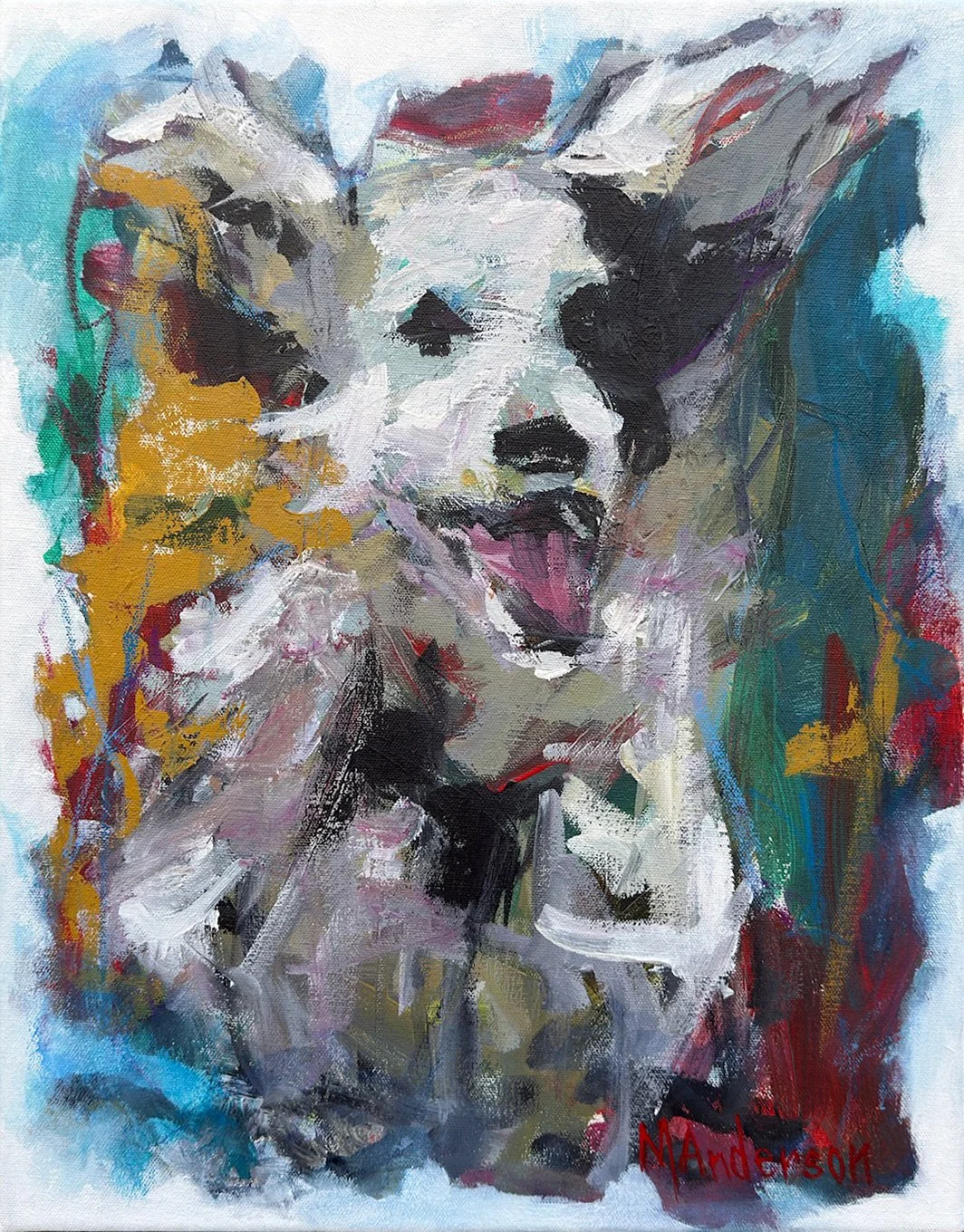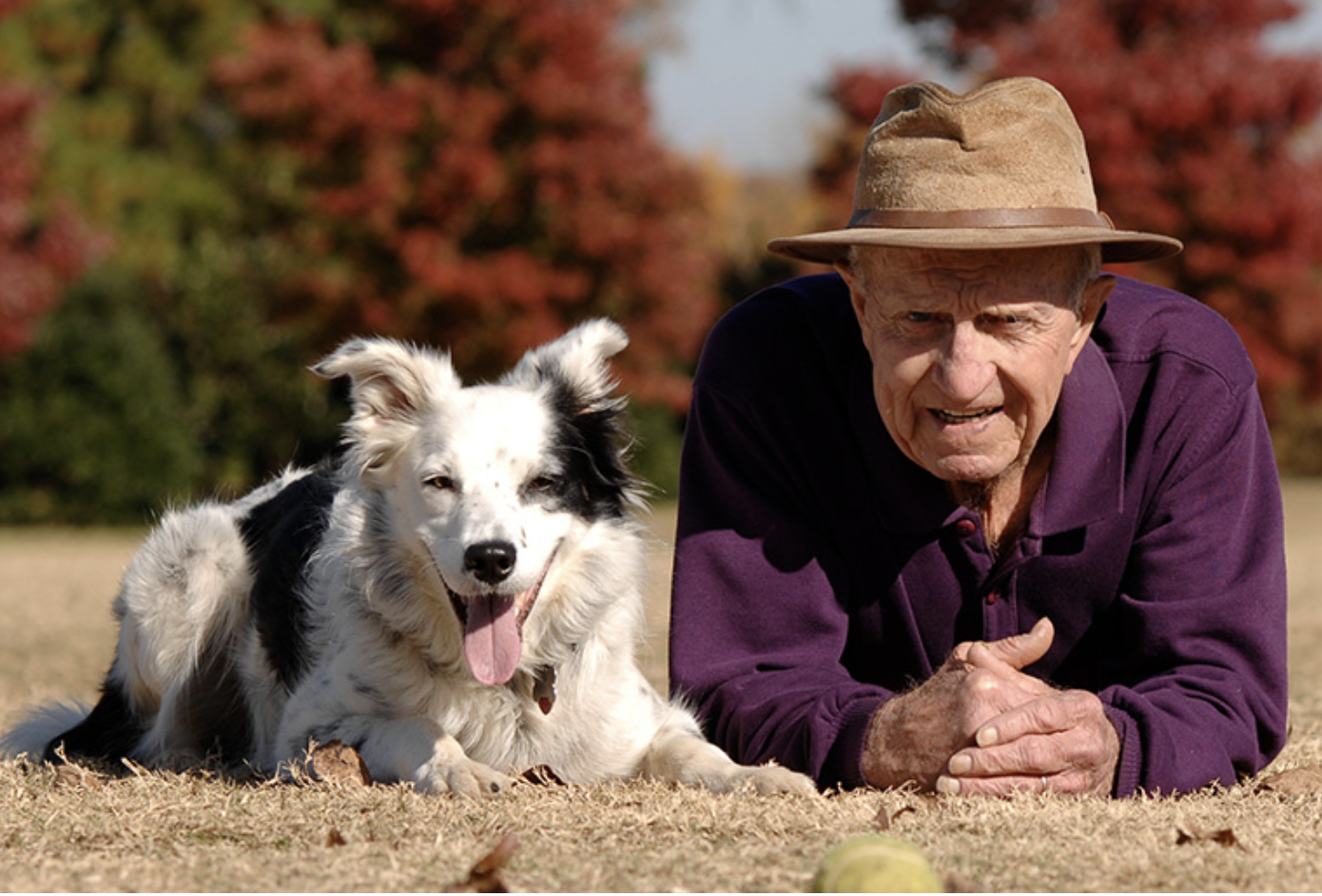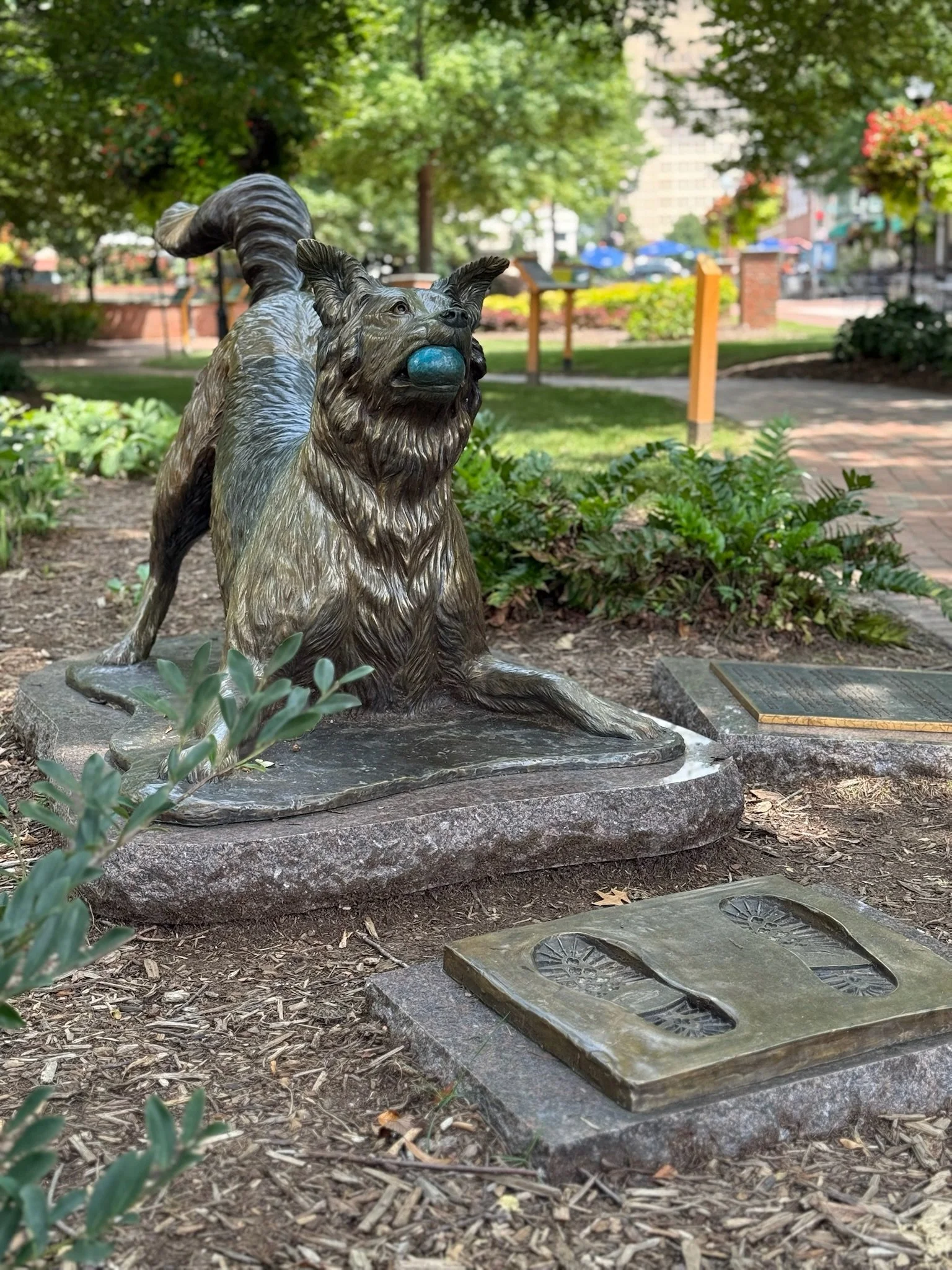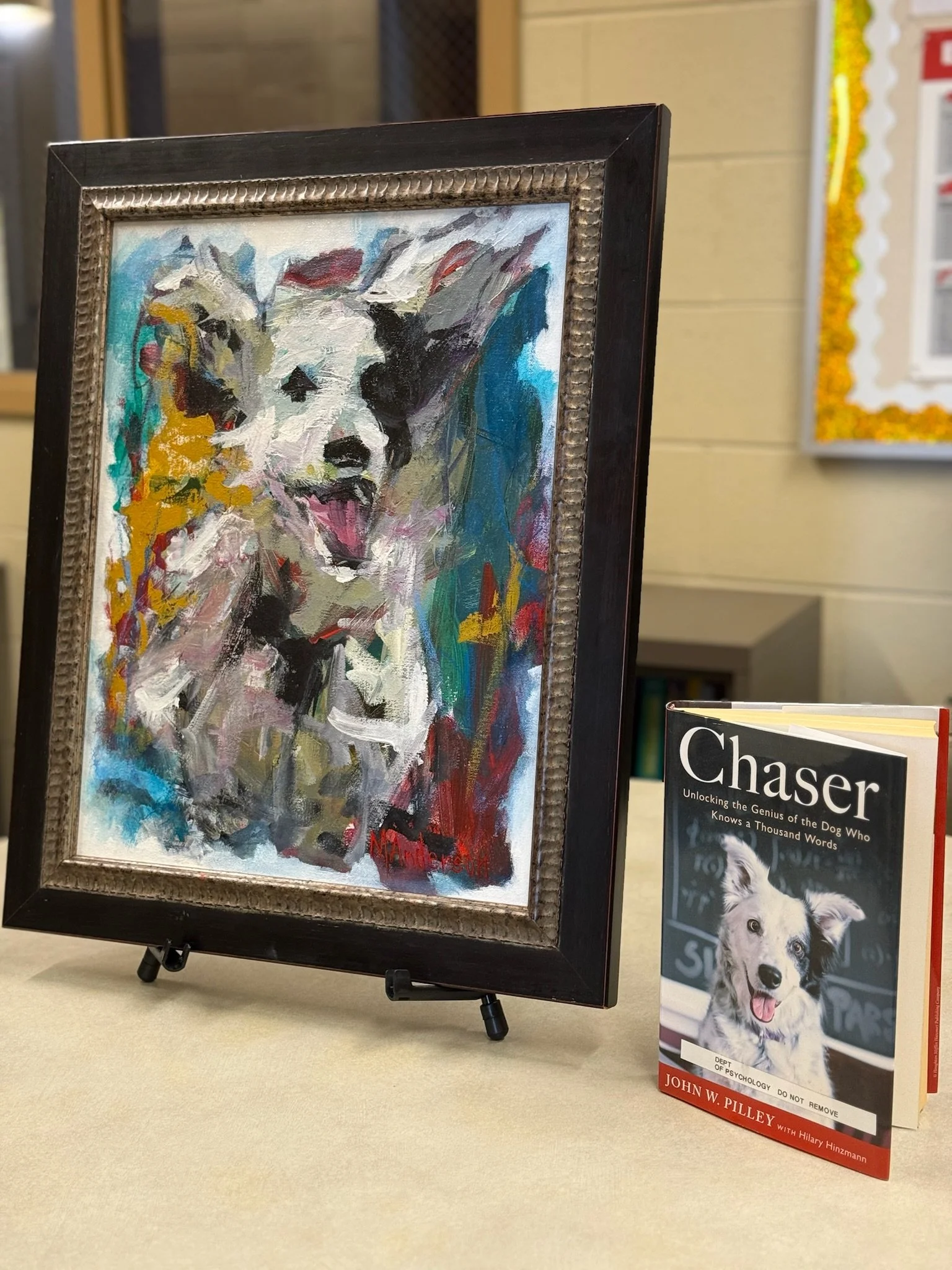Learning Through Play: Chaser’s Lesson for Artists
Some dogs fetch. Some dogs shake paws. Chaser, Wofford College’s unforgettable border collie, learned over 1,000 words and became a campus legend. Her story of intelligence, play, and loyalty has left a mark far beyond the classroom.
“Chaser” | 14×18” | Oil on Canavs
This painting is my way of celebrating Chaser’s spirit. It’s loose, colorful, and full of movement—just like Chaser herself. Now hanging in the psychology department at Wofford, I hope this artwork leaves the school with the memory of a dog who showed us all what dogs are really made of.
What Chaser Taught Me About Art
Dr. John Pilley, Chaser’s owner and trainer, believed that play was the key to learning—and I’ve found that same truth in my studio. When I approach a canvas, I try to stay in the “play zone.” Not everything in a working studio feels playful, but the more I treat my brushes, colors, and tools as toys to explore, the freer the work becomes. Instead of chasing perfection, I give myself playful challenges. I might choose a scarf and decide every color in the painting has to come from it. Or I’ll forbid myself from using blue in a landscape and suddenly the sky transforms into something unexpected. Lines bend, colors twist, and the scene becomes more imaginative.
Like Chaser, I’ve learned that creativity flourishes in play. Dogs may not need to be perfect when they learn, and neither do artists. Perfection stiffens the hand, but play keeps creativity alive.
Chaser’s Story
A gift from his wife, Chaser belonged to Dr. Pilley, a psychology professor at Wofford, who set out to explore the limits of canine intelligence. He found that play worked even better for teaching dogs than treats. Through years of training and love, Chaser learned the names of more than a thousand toys, could understand sentences, and even learned to categorize objects. But to the students and the community, Chaser was more than a research subject—she was a campus treasure.
Chaser and Dr. John Pilley, Photo Credit: Wofford College
What made Chaser so remarkable was her precision. Each toy had a name—“Blue,” “Boomer,” “Lips”—and she could pick the correct one out of a pile of hundreds. Dr. Pilley would bring her toy basket into the classroom, and students could call out a name at random. Time and again, Chaser would dart into the pile, nose twitching, tail wagging, and proudly deliver the exact toy requested. Beyond memorization, she could even group toys into categories—ball, Frisbee, stuffed animal—showing a level of understanding that astonished scientists and delighted students.
Her training wasn’t about drills or food rewards, but play and encouragement. To Chaser, learning was a game. That spirit of joy became contagious, a reminder to everyone watching that discovery can be fun, and that curiosity, not perfection, is what fuels growth.
Over the semesters, Chaser became a beloved figure at Wofford, showing up in classes, greeting students, and proving that the bond between people and dogs goes far beyond simple companionship. She was the image of loyalty, joy, and curiosity—the very qualities that make dogs so extraordinary.
After her passing in 2019, Wofford honored Chaser with a bronze statue on campus. Next to the dog sits an empty pair of Pilley’s shoes. It’s more than a monument; it’s a reminder of the lessons she taught—not just about intelligence, but about connection, patience, and the experience of learning together.





